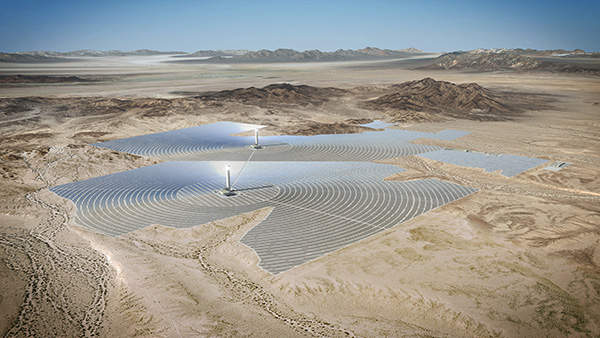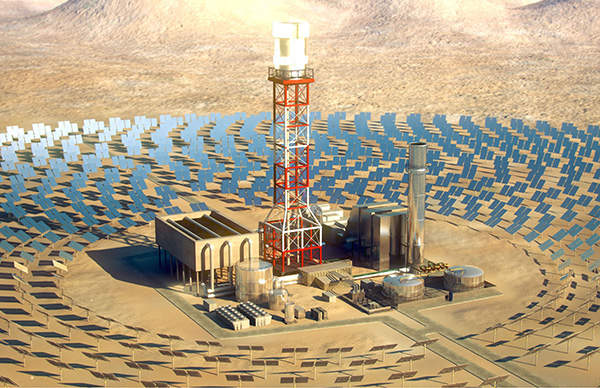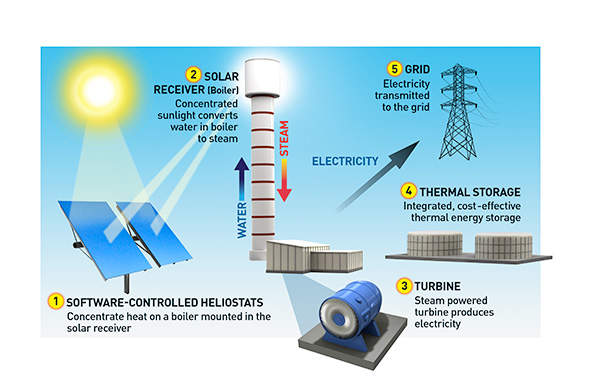The Rio Mesa solar electric generating facility (SEGF) was a proposed project to develop two solar power generating units with a combined production capacity of 500MW. The project was scheduled to be built on the Palo Verde Mesa in Riverside County, California, US, 13 miles (20.9km) south-west of Blythe. It was officially terminated in July 2013.
Through its wholly-owned subsidiary, Rio Mesa Solar Holdings, Bright Source Energy (BSE) planned to construct, develop and operate the project. Construction was expected to start in the fourth quarter of 2013 and be completed by the second quarter of 2016.
The Rio Mesa SEGF was supposed to cost approximately $2bn. It was to spread across 4,070 acres of land. The majority of it was to be private land owned by the Metropolitan Water District.
The facility was designed to have the potential to serve more than 200,000 California homes during the peak demand hours for electricity. It was also anticipated to reduce CO₂ emissions by more than 13 million tonnes during the 25 years of its operational life. Southern California Edison (SCE) was expected to purchase the power generated from one unit of the project.
Construction of Rio Mesa’s solar plants
Construction of the first solar plant of the Rio Mesa SEGF was expected to start in the fourth quarter of 2013. The second plant was scheduled to be launched for construction in the first quarter of 2014.
Local workers were to be hired for the construction. The project was expected to create more than 1,700 construction jobs as well as 100 operation and maintenance jobs.
Rio Mesa SEGF power plant details
The Rio Mesa SEGF was expected to have two concentrating solar power plants and associated facilities built on 3,805 acres of land. Each plant was supposed to have an installed capacity of 250MW.
Each plant was to include a solar power boiler or solar receiver steam generator (SRSG) situated on a 750ft tall concrete tower. Each SRSG was expected to be surrounded by a solar field consisting of approximately 85,000 heliostats. Each heliostat was to have two mirrors with a reflecting area of roughly 19m².
The heliostats were to focus solar energy onto the SRSG which was planned to produce superheated steam using heat.
Each plant was also to have an auxiliary gas-fired boiler for parallel operation when the primary boiler was fully loaded.
Infrastructure common to the two solar plants was expected to include combined administration, control and maintenance facilities, a water treatment facility and a switchyard.
Technology used for the Californian project
The Rio Mesa SEGF was to be equipped with BSE’s Luz Power Tower (LPT) solar thermal system. LPT was supposed to involve an innovative solar field design, in order to improve the plant’s performance and efficiency while reducing land use by more than 33% compared to a typical photovoltaic (PV) farm or parabolic trough solar thermal plant.
The project was expected to use approximately 360,000 software-controlled mirrors to track the sun in two dimensions and reflect sunlight to the boilers. The superheated steam produced by the boiler was anticipated to be piped to a Rankine cycle non-reheat steam turbine.
The turbine, in turn, was planned to be directly connected to a rotating generator that would generate electricity.
Grid connections to the Rio Mesa SEGF
The Rio Mesa SEGF was to be interconnected to Southern California Edison’s (SCE) grid via a common 220kV overhead tie-line (gen-tie line).
The gen-tie-line was supposed to run for 9.7 miles (15.6km) from the power plant to the new Colorado River Substation (CRS) located south of the SCE 500kV route.
The new CRS was planned to be interconnected to the 500kV Devers-Palo Verde (DPV1) transmission line, which runs for about two to five miles to the north of the CRS site. Construction of the CRS was expected to be completed during 2013-2014.
The transmission infrastructure of each plant was to include a 220kV generator step-up substation (GSUS), which was to be comprised of a 220kV motor-operated disconnect switch and a 220kV terminal.
Minimal environmental impact
The environmental impact of the Rio Mesa SEGF was stated to be minimal. Apart from using less land compared to a typical solar plant, the project was expected to emit 85% fewer air pollutants compared to a natural gas-fired power plant. It was also to use up to 95% less water than a wet-cooled solar thermal plant.
Related content
Topaz Solar Farm, California, United States of America
Topaz Solar Farm is a 550MW photovoltaic (PV) solar power project being built in the east San Luis Obispo County, California.
Desert Sunlight Solar Farm, Riverside County, California
Desert Sunlight Solar Farm is a 550MW photovoltaic (PV) solar power project being built across 4,100 acres of land in the Chuckwalla Valley. It is being developed by NextEra Energy Resources and GE Financial Services.






